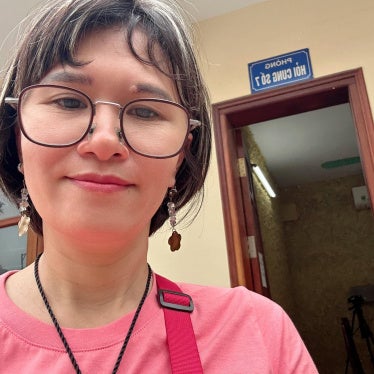KABUL -- This past week, delegates to Afghanistan's constitutional loya jirga, or "grand council," have been meeting to approve a new constitution for their country, still wracked by violence and disunity two years after the fall of the Taliban. The international community is hopeful that a new charter for the country will pave the way for further democratization and stability.
Yet pessimism may still be in order. The elections for delegates to the meeting earlier this fall were marred by vote buying, death threats and general intimidation. Many candidates told me in early December that the environment of fear kept them from even standing for election. Warlord proxies ran in large numbers. In some provinces, local warlords themselves were elected, despite rules preventing them from running. While some independent-minded people were elected, for the most part the process was dominated by the warlords and their allies.
Even in Kabul there were problems, despite the presence of international peacekeepers, United Nations officials, and hundreds of journalists to help protect and monitor the elections. The Kabul regional elections resulted in the election of a feared mujahidin leader, Abdul Rabb al-Rasul Sayyaf, whose Ittihad-e Islami faction was involved in some of the worst fighting in Kabul 10 years ago when much of the city was destroyed. Municipal elections, held under a tent at the Gazi soccer stadium -- where the Taliban used to execute people -- were also flawed. Though the election site was guarded by Canadian and British peacekeeping troops and monitored by the U.N., many candidates complained about voter intimidation right at the site and a massive campaign to buy votes at $200 to $500 per person.
U.N. officials even witnessed two workers from Kabul's dominant military-political faction, Shura-e Nazar, sitting at a table near the ballot box checking votes. As some voters approached the ballot box, they opened their voting card to show the two men, who then checked the voter's name on their list. The U.N. confiscated the list and banished the two men, but the votes were counted.
There was also a scary collection of tufangdaran -- "gunmen" in Dari -- walking about at the Kabul election site. I saw Arif Noori, the head of the fear-inspiring Afghan intelligence agency, the Amniat-e Melli, the Kabul city intelligence deputy chief, and a deputy minister of defense. Then there was Zalmay Tofan, a senior commander under Sayyaf who has been implicated in war crimes committed in the early 1990s. The mere presence of men like this creates an atmosphere of fear, since many Afghans know these men have been involved in abuses in the past.
Although some courageous people stood up to the gunmen, blocks of votes for delegates to the loya jirga went to regional kingpins like Sayyaf, the western stongman Ismail Khan and the northern warlord General Rashid Dostum. The former president of Afghanistan and factional leader Burhanuddin Rabbani was also elected in the northeast, following a race in which one of his opponents received death threats. His faction picked up dozens of seats nationally. Most of these men now control blocks of votes at the loya jirga, and are using them both to advance their private agendas and to increase their political power.
Worse still, the meeting now underway has been dominated by the warlords. Those with the guts to stand up to the gunmen have faced severe pressures. One woman delegate, Malalai Joya stood up and complained about the warlord dominance last week, but was almost thrown out of the convention and now requires full-time security guards. Needless to add, women's rights issues haven't been robustly debated at the meeting.
Yet it probably wouldn't matter much if the meeting were going better. The sad truth is that the entire process has already been scripted to the end. President Hamid Karzai has been meeting with the warlords and trying to get their support for his draft of the constitution, which contains strong presidential powers and some human rights protections. And he will probably succeed. But while the constitution may create a strong presidency on paper and contain tepid human rights protections, it seems likely that Sayyaf and other warlords will ultimately emerge stronger at the end of the convention and continue their stranglehold on Afghan politics.
Here, ultimately, is the real problem. The entire loya jirga process is oriented toward the status quo. Nothing in the draft constitution addresses Afghanistan's warlord-dominated power dynamic. All of the real decisions are still being made behind closed doors by men with guns. The United States, which has supplied weapons and cash to many warlords since 2001, doesn't seem to get it. Along with Mr. Karzai, U.S. officials are still emphasizing the constitution over a coherent strategy that marginalizes the warlords.
The United States and other countries with influence, as well as the United Nations, must now redouble their efforts to sideline Afghanistan's dominant military factions and strengthen legitimate civic and political organizations, independent media, and human rights groups, so that future political processes, including next year's parliamentary and presidential elections, are more representative.
Power brokering with repressive political kingpins is not the way forward. Instead, it is time to address Afghanistan's "protection vacuum," which has allowed local warlords to dominate this process. Sunday's announcement that the United States will deploy more small security units to the countryside was a welcome step, but additional expansion will be needed. Troops from other countries and many more U.N. human rights monitors should be deployed across the country, so that Afghans in trouble have someone to turn to other than a local gunman. The alternative is to allow warlordism and factionalism to run rampant. After 25 years of war, Afghans deserve better.
---
John Sifton is the researcher on Afghanistan at Human Rights Watch.







